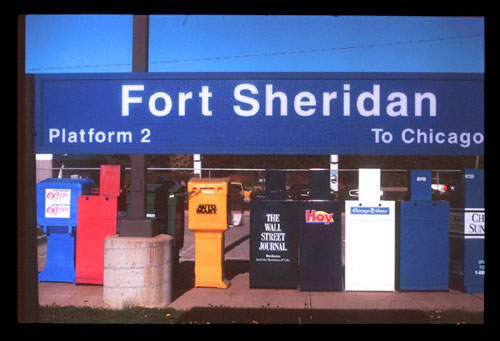UnStorming Sheridan >> Story Three >> Fort Sheridan

Alarmed by the Haymarket Incident and growing labor militancy, the Commercial Club of Chicago, dominated by George Pullman and the McCormick family, approached Congress in the summer of 1886 to donate 600 acres 26 miles northwest of downtown Chicago with the stipulation that a military base would be located there. The gift was accepted by Congress and the Secretary of War the following year, and the first troops were rushed to the new installation on November 8, 1887 to be on hand should the execution of the Haymarket prisoners spark a worker revolt. The executions passed without the feared revolution, but Fort Sheridan would nonetheless be developed as a showpiece military base in the heart of the one of the wealthiest suburban areas in the United States. By the Pullman Strike of 1894, when US Army would for the last time be deployed to suppress a domestic insurrection, the fort was an architectural legend, with more in common with surrounding mansions than a rough-and-ready western outpost. On July 3, commanding officer Colonel Robert E. A. Crofton was instructed "to move his entire command at once to the city of Chicago...there to execute the orders and processes of the United States court, to prevent the obstruction of the United States mails, and generally to enforce the faithful execution of the laws of the United States." Troops left Fort Sheridan at 9 PM on July 3, arriving in Chicago at 10:15 AM on Independence Day to protect corporate property and profits against striking workers and the rioting poor.
Today Fort Sheridan has been partially decommissioned and is being refurbished as a luxury subdivision.
| << back | forward >> | |
| story one | home | story two |